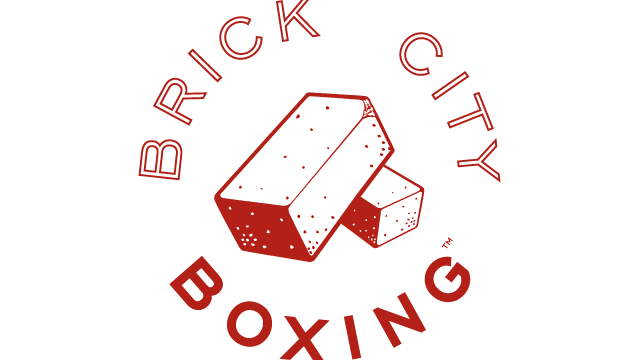Brickcityboxing.com is pleased to post NJ Boxing Hall of Famer Bob Fernandez’s contributions. This post is about “Sugar” Ray Robinson.
By: BOB FERNANDEZ
He was tall for a lightweight, very rangy, with supple muscles and slope shoulders that come with terrific punchers. He could box brilliantly and if need be, set down and trade bombs with the best punchers in three weight divisions. In short, outbox the boxers, outslug the sluggers and even out bolo the bolo punchers. He also was the possessor of an iron jaw, having never been stopped in 85 amateur and 201 professional bouts. Only once did he fail to finish; and that was due to heat prostration in a bout where the referee had to be replaced because of the intense heat. With all the fine qualities, plus the iron jaw, he had to become a boxing legend. And he was.
In my 65 years of watching fights, I have never seen his like. He was indeed the greatest. And he knew it. He had a hell of an ego. He started as a pro in 1940 and tore through a maze of great fighters on his way to immortality. The boxing writers quickly nickname him “Sugar” for he was sweet as sugar.Thus, you had “Sugar Ray Robinson”. The words, flawless, superb and impeccable, class, etc. were synonymous with Sugar Ray— he lived it and enjoyed it.
Outside the ring he was the Beau Brummell of boxing. He dressed like a prince and drove a flaming pink Caddy Convertible. While fighting in Europe, the British Press called him “His Sugarship”—-the toast of Great Britain and the world.
When the welterweight title was up for grabs, after Marty Servo’s forced retirement, a tournament was suggested, pitting the top ten welters to fight it out for the vacant crown. Only one man stepped forward to oppose the Great Sugar. That man was Tommy Bell. Hell, the others knew they had no chance. Sugar had beaten Servo two times before he had won the title and had also beaten Tommy Bell. But Bell was determined and hungry. A shot at the title and a payday he couldn’t refuse.
Bell, a good fighter, fought the fight of his life that night and even put Robby on the deck. Sugar came back to floor Bell and win the fifteen round decision and the welterweight championship in a rousing fight. One reporter wrote, “He, Sugar Ray, manages to look classy even while on the canvas”.
Sugar was finally champ. Along came the copycats. Any fighter who had a fairly smooth boxing style called himself Sugar. Preliminary fighters who were black and had Ray for a first name were automatically Sugar Ray. It was this: in boxing, the word Sugar meant great.
Robinson never said it, but he appeared to resent anyone using his nickname. I believe most fans knew it. Even before Robby won the title, George Costner, a fighter who many were saying was another Sugar Ray, starting demanding a match with Robinson. He was smooth and he could fight. The news media started billing him as George “Sugar” Costner. Little did they know that doing just that would be George’s ruination.
Robinson gave Costner the fight he was clamoring for. The result—the headlines read “Sugar Ray Kayoes Sugar George in one”. Costner was flattened like a pancake. One could virtually hear Ray say, “how dare he use my nickname, there is only one Sugar Ray”.
Costner still wasn’t satisfied. He went on a win streak and kept hollering for a return match. After all Costner had a great ledger; he had 73 wins with only a few losses. Sugar Ray figured he better put an end to this Sugar George bit— twice and for all. So after five years they met again—and one more time, George was “KOed in One”.I think Ray got the final word out, “Don’t Mess With My Sugar”.Ray’s ego was satisfied.
Costner went on to win three fights after his loss to Robinson, winning in ten over the then current Lightweight Champion, Ike Williams, then defeating the future welterweight hampion, Kid Gavilan. Two great Hall of Famers. That’s how good Costner was. However, after his next fight, also a winnng one, an eye examination showed that he had a detached retina. Doctors told him if he continued to fight, he would go blind. Costner did quit, still at the top of his form. The sad thing is he did go blind later in life. He was a damn good fighter, leaving a 77-10-5 record, with 45 kayoes. Today’s fighters are lucky to fight 40 times in an entire career, never mind 48 kayoes. If Costner were around today, he would be a super star. But his one big mistake was being called “Sugar”—and we all know there was only one “Sugar”— his name was Ray Robinson.
Until this day the beat goes on—-with the Leonard’s, Mosleys, etc. Sugar in boxing means GREAT and also WINNER. And everyone wants to be a winner.
ABOUT THE AUTHOR
Bob Fernandez was inducted into the New Jersey Boxing hall of Fame as a Boxing Historian; and was honored by International Veteran Boxer Association, Ring # 25 as the recipient of the Sugar Ray Robinson Memorial Award.
Bob became obsessed with boxing events, history and memorabilia at an early age, fascinating boxing enthusiasts with his anecdotes and instant recall of boxers and boxing events. His passion for the sweet science is reflected as a prominent collector of boxing memorabilia, which started at the age of 10. His memorabilia has been exhibited at the International Boxing Hall of Fame in Canastota, New York. A few of his clients included such luminaries as Joey Giardello, Emile Griffith, Billy Graham, Wally Mathews, the boxing writer, and Randy Gordon, former boxing commissioner and editor of Ring Magazine.
Bob has written boxing stories with interesting details about outstanding New Jersey fighters, including great favorites Tippy Larkin, Ike Williams, Jersey Joe Walcott, Charlie Fusari and Tony Galento; and Bob’s idol, Sugar Ray Robinson. Of local interest is a story entitled “Laurel Garden and Meadowbrook Bowl — School of Local Greats”.
Bob’s latest literary work is a book entitled “The Four Crumbling Houses—-10 Count”. The theme is the unique real-life escapades and adventures, which bound together for life a Black kid, who became a professional boxer, and Irish kid; and the author, Bob Fernandez, a Spanish/Polish kid, in a racially hostile environment and era, the 1940’s. The book will be in book stores in March.


